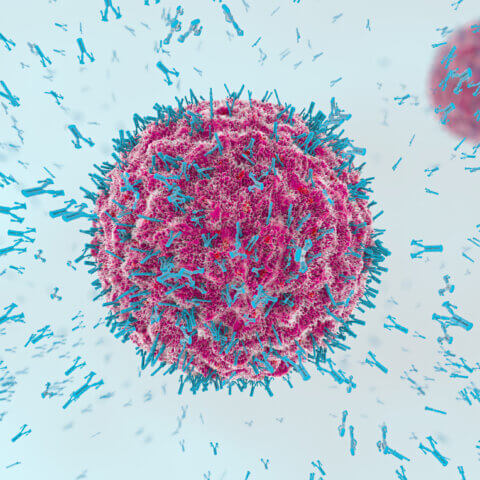Last Updated: October 9, 2024, 11 am UTC
Rare cancers account for 27 percent of all new cancer diagnoses in the U.S. and 22 percent of all new cancer diagnoses in the EU.1 With their poorly understood natural histories, phenotypic heterogeneity, and diverse clinical manifestations, rare cancers pose challenges to drug development and represent a significant unmet need in oncology. Faced with limited treatment options, researchers, clinicians, and patients may be seeking approaches to accelerate the development and approval of novel therapies. In this blog post, we review the regulatory programs available to expedite treatments for rare disorders and serious diseases.
History of expedited programs for serious conditions
The FDA first formally articulated its thinking on expediting availability of promising new therapies in Title 21 of the Code of Federal Regulations, Section 312, Subpart E. Subpart E regulations are intended to accelerate the availability of new therapies to patients with serious conditions, especially in cases where there are no satisfactory alternative therapies, while still preserving appropriate standards for safety and efficacy.2 The regulations also reflect the FDA’s recognition that patients and physicians might be willing to accept greater treatment-related risks for life-threatening or severely debilitating diseases. In addition to providing guidance for early consultation with the FDA for efficient trial design, Subpart E references the potential to rely on well-controlled Phase 2 studies for evidence of effectiveness.
The FDA has a history of applying the philosophy behind Subpart E to drugs for rare diseases through its expedited programs. Recognizing that certain aspects of drug development that are feasible for common diseases may not be possible for rare diseases, the agency has demonstrated a willingness to be flexible in response to the challenges posed by rare diseases.
Expedited programs in the U.S.
The 2020 approvals of tazmetostat for advanced epithelioid sarcoma and selumetinib for neurofibromatosis type 1 demonstrate the FDA’s commitment to making the unique needs of rare cancers a top priority. For therapies like these, there are a number of regulatory mechanisms available to help expedite rare oncology programs, each with specific qualification criteria (see Figure 1).
Figure 1. Comparison of FDA expedited programs
| Program | Nature of Program | Qualifying Criteria |
| Fast Track | Designation | Intended to treat a serious condition AND nonclinical or clinical data demonstrate the potential to address unmet medical need OR A drug that has been designated as a qualified infectious disease product |
| Breakthrough Therapy | Designation | Intended to treat a serious condition AND preliminary clinical evidence indicates that the drug may demonstrate substantial improvement on a clinically significant endpoint(s) over available therapies |
| Accelerated Approval | Approval Pathway | Treats a serious condition AND generally provides a meaningful advantage over available therapies AND demonstrates an effect on a surrogate endpoint that is reasonably likely to predict clinical benefit or on a clinical endpoint that can be measured earlier than irreversible morbidity or mortality (IMM) that is reasonably likely to predict an effect on IMM or other clinical benefit (i.e., an intermediate clinical endpoint) |
| Priority Review | Designation | New drug application (NDA)/ biologics license application (BLA) for a drug that treats a serious condition AND, if approved, would provide a significant improvement in safety or effectiveness OR Supplement that proposes a labeling change pursuant to a report on a pediatric study OR Application for a drug that has been designated as a qualified infectious disease product OR Application or supplement for a drug submitted with a priority review voucher |
Fast track designation
Fast track designation requests can be submitted with the investigational new drug (IND) application or afterwards, but ideally no later than the pre-NDA or pre-BLA meeting. These requests can be made with non-clinical or clinical data. The FDA will respond to the request within 60 calendar days of receipt. Some key features of fast track designation approval are guidance on expedited development and review and eligibility for rolling review. It is important for sponsors to keep in mind that this designation can be rescinded if the therapy no longer meets the qualifying criteria.
Breakthrough therapy designation
Breakthrough therapy designation requests must be accompanied by preliminary clinical evidence. Requests can be submitted with the IND or afterwards, but ideally no later than the end-of-Phase-2 meeting, and the FDA will respond to the request within 60 calendar days of receipt. If the request is granted, the sponsor will be eligible for intensive guidance on efficient drug development, rolling review, Breakthrough therapy designation requests must be accompanied by preliminary clinical evidence. Requests can be submitted with the IND or afterwards, but ideally no later than the end-of-Phase-2 meeting, and the FDA will respond to the request within 60 calendar days of receipt. If the request is granted, the sponsor will be eligible for intensive guidance on efficient drug development, rolling review, and other actions to expedite review. As with fast track designation, this designation may be rescinded if the qualifying criteria are no longer met.
Accelerated approval pathway
Sponsors who are interested in pursuing the accelerated approval should discuss their plans with the FDA review division during development. Typically, the FDA will want to know that confirmatory studies will be underway at the time of accelerated approval. Unlike the expedited programs for designations, there is no specified timeline for FDA response. If allowed, this pathway enables approval based on an effect on a surrogate endpoint or intermediate clinical endpoint that is reasonably likely to predict the clinical benefit of the investigational therapy.
Priority review designation
Requests for priority review designation should be submitted with the original NDA, BLA, or efficacy supplement and the FDA will respond within 60 days of receipt. Priority review shortens the clock from review of marketing applications from 10 months to six months.
Expedited programs in the EU
In the EU, PRIority MEdicines (PRIME) is the primary mechanism for expediting the development of medicines that target an unmet medical need. PRIME allows for enhanced interaction and early dialogue to optimize the generation of robust data and enable accelerated assessment of applications for marketing authorization. To be eligible for PRIME, a therapeutic must demonstrate the potential to benefit patients with unmet medical needs based on early clinical data. Key features of PRIME approval include the appointment of a rapporteur to provide continuous support, organization of a kick-off meeting to provide guidance on the overall development plan and regulatory strategy, assignment of a dedicated contact point, and provision of scientific advice at key development milestones.
As of July 23, 2020, of the 87 PRIME applications received for oncology medicines, 19 were granted.3
Key takeaways
Regulatory flexibility and extensive agency guidance are available, and sponsors of rare oncology therapies should carefully consider their options for expedited programs based on their specific development plan and marketing strategy. Working with a partner like Premier Research who has extensive experience in expedited programs can help to ensure eligibility and smooth execution of the studies required to accelerate drug development for rare cancers. To schedule a conversation with one of our experts, click here.
1 Greenlee RT, et al. The occurrence of rare cancers in U.S. adults, 1995-2004. Public Health Rep. 2010;125(1):28-43.
2 U.S. Food and Drug Administration. Guidance Document: Expedited Programs for Serious Conditions —Drugs and Biologics. May 2014. Available at https://www.fda.gov/media/86377/download.
3 European Medicines Agency. PRIME: priority medicines. Available at https://www.ema.europa.eu/en/human-regulatory/research-development/prime-priority-medicines/. Accessed September 22, 2020.

 Webinar
Webinar 


 Perspectives Blog
Perspectives Blog 